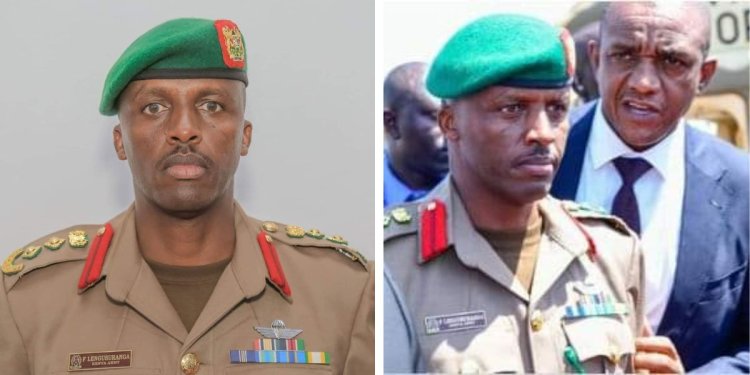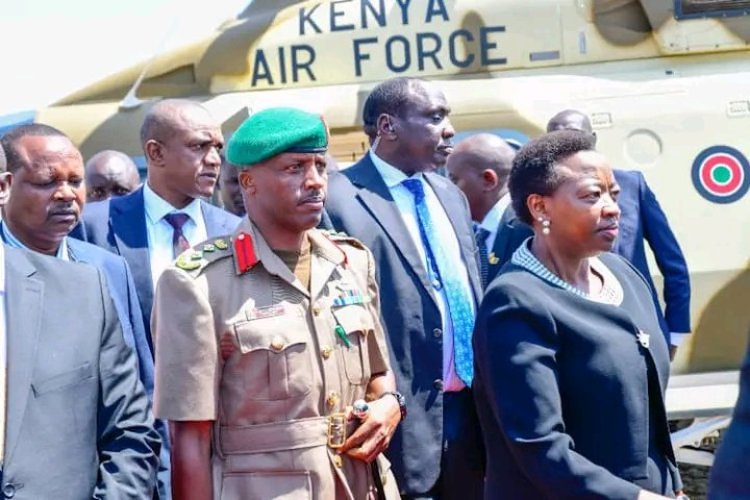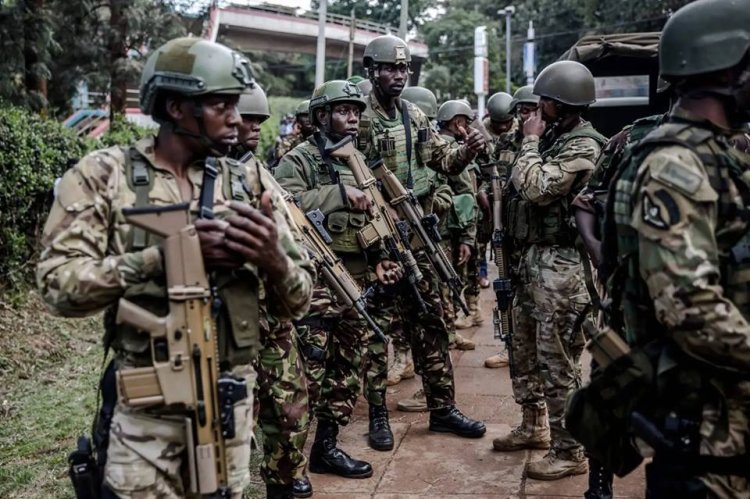Story Of Green Beret Worn By Ruto's New Aide De Camp
Since that time, he has been accompanying the President to any public event he goes to..

Colonel Fabian Lengusuranga from the Kenya Army was appointed as President William Ruto's new Aide-De-Camp (ADC) on Tuesday, October 4.
Lengusuranga takes over from Timothy Lekolool who was promoted by former President Uhuru Kenyatta to Brigadier and deployed to the Department of Defence headquarters and served President Ruto during his first weeks as Head of State.
Since that time, he has been accompanying the President to any public event he goes to, and his first assignment was accompanying the fifth president of Kenya to the burial of Jack Gachagua, Deputy President Rigathi Gachagua’s brother in Mathira, Nyeri County.

However, keen eyes have taken note of the green beret worn by Col. Lengusuranga on his head, compared to other ADCs from the Kenya Army who served before him.
Viral Tea has established that the beret signals that he was drawn from the Special Operations Regiment, the Kenya Army's version of the United States (US) Army special forces. Any soldier in the unit sports a green beret and as a coincidence, the US version has soldiers dubbed the 'Green Berets'.
The unit is tasked with airborne operations, commando raids, reconnaissance, counter-insurgency, infiltration and other specialized forms of warfare. The umbrella body of specialised units in the army is based in Gilgil, Nakuru County and the units include the 20th Parachute Battalion, 30th Special Forces and 40th Rangers Strike Force.
The 20th Parachute Battalion is the regiment's oldest unit formed on March 17, 1983, and presented with its Regimental and Presidential Colours during the 1990 Jamhuri Day celebrations. However, the plan to set up the unit was mooted immediately after Kenya gained its independence when on October 14, 1964, 40 officers were sent to Britain for a Parachute Basic Training Course.
Similar numbers subsequently followed until about 200 Kenyan troops qualified to form the 1st Independent Parachute Company on April 24, 1965.
The first African officer to command the company was Maj Daniel Opande, who would rise to become the country’s pre-eminent soldier diplomat and was the United Nations Mission to Sierra Leone (Unamsil) Force Commander at the close of the 1990s.
He retired as Vice-Chief of the General Staff in 2000. Maj Opande commanded 20 Paratroop between 1970 and 1972 and was succeeded by Maj Marsden Madoka, later to become an MP and Cabinet minister.
Over the last 50 years, members of the public have become familiar with the Green Eagles freefall display team which regularly performs in Agricultural Society of Kenya (ASK) shows.
The '20 paras', as called in short, are assigned and equipped for high-risk special operations and the battalion is largely geared towards high-intensity conflicts. Its 'D' Company however was formed with American assistance post 9/11 with an emphasis on counter-insurgency to help combat terror groups within Eastern Africa.
Paratroopers are the mainstay of Special Forces because they can be dropped almost anywhere including deep behind enemy lines to perform risky missions such as sabotage and demolitions and infiltrating an enemy where it thinks it is strongest.
The companies of the 20 Paratroop Battalion include a ranger strike company (The Rangers), a Special Force Company, a Support Company, a Headquarters Company and an independent Parachute Training School which trains not only the personnel of 20 Para but other students from the Army and even from the Air Force and the Navy.
Its divisions include Parachute Training Wing, Tactics Training Wing and Weapons Training Wing.
The 20 Paratroop Battalion has contributed substantially to internal and external security operations in the country. Some of these operations include the Shifta campaign in the North Eastern Province between 1965 and 1968 and the Ngoroko campaign in Turkana and West Pokot districts between 1984 and 1990.
It also participated in Operation Good Hope in Moyale in 2004 whose main objective was to flush out the Ethiopian rebel group, Oromo Liberation Front.
The 30th Special Forces and 40th Rangers Strike Force are newer units within the army tasked with special operations in low-intensity conflicts.
They were formed with the clear aim of having units within the Kenya Defence Forces (KDF) that are capable of special operations against terror groups most notably Al Shabaab in Southern Somalia and North Eastern Kenya.


 admin
admin 




